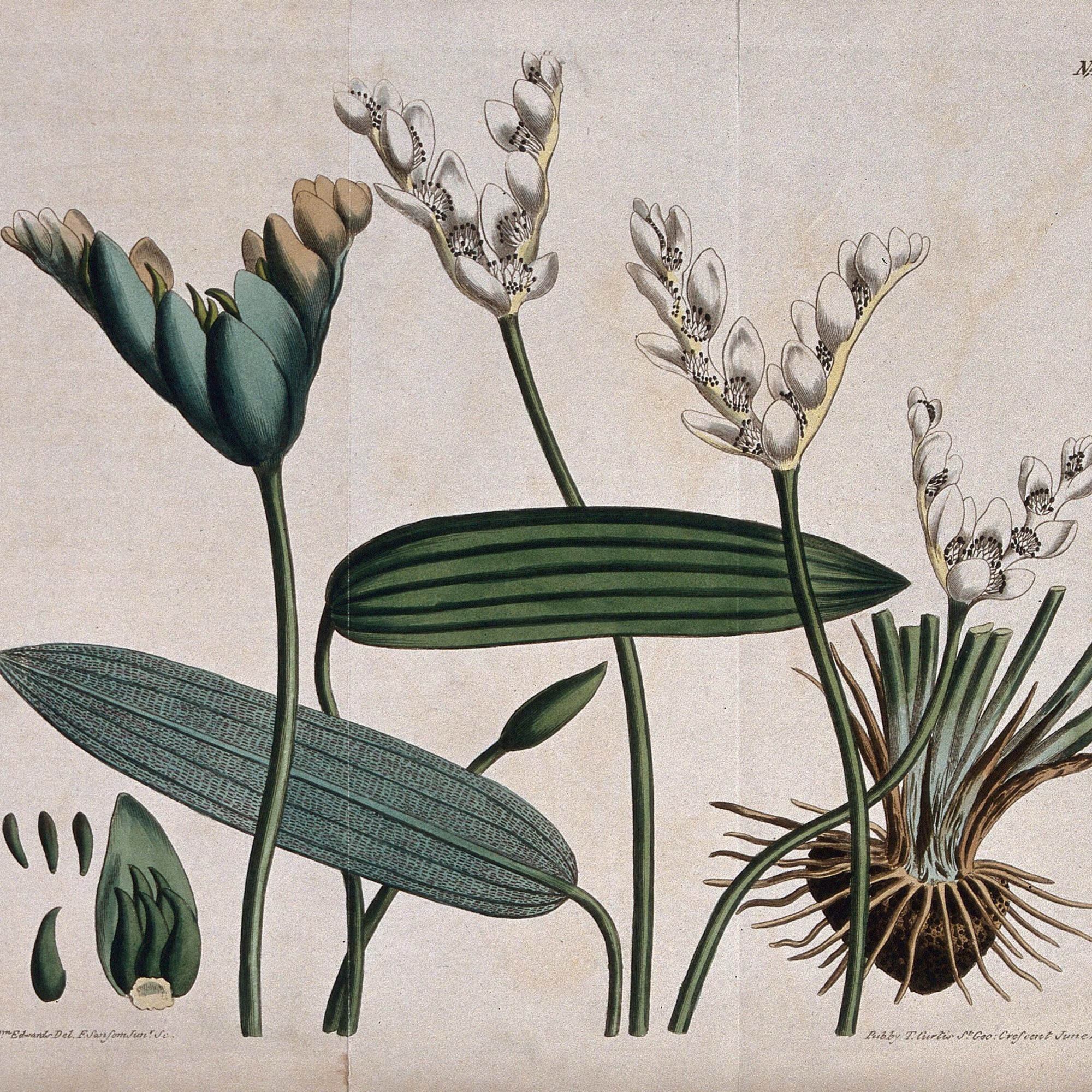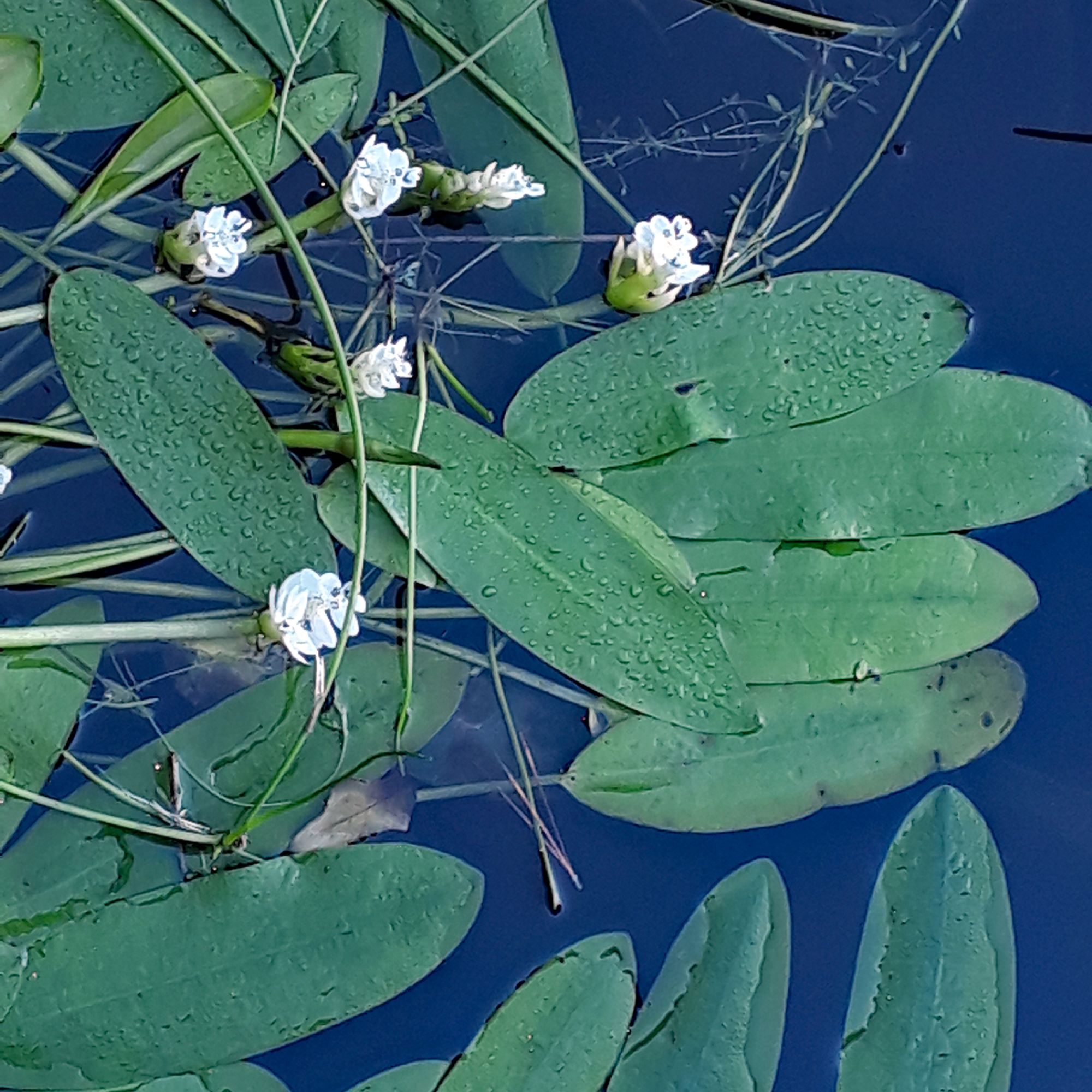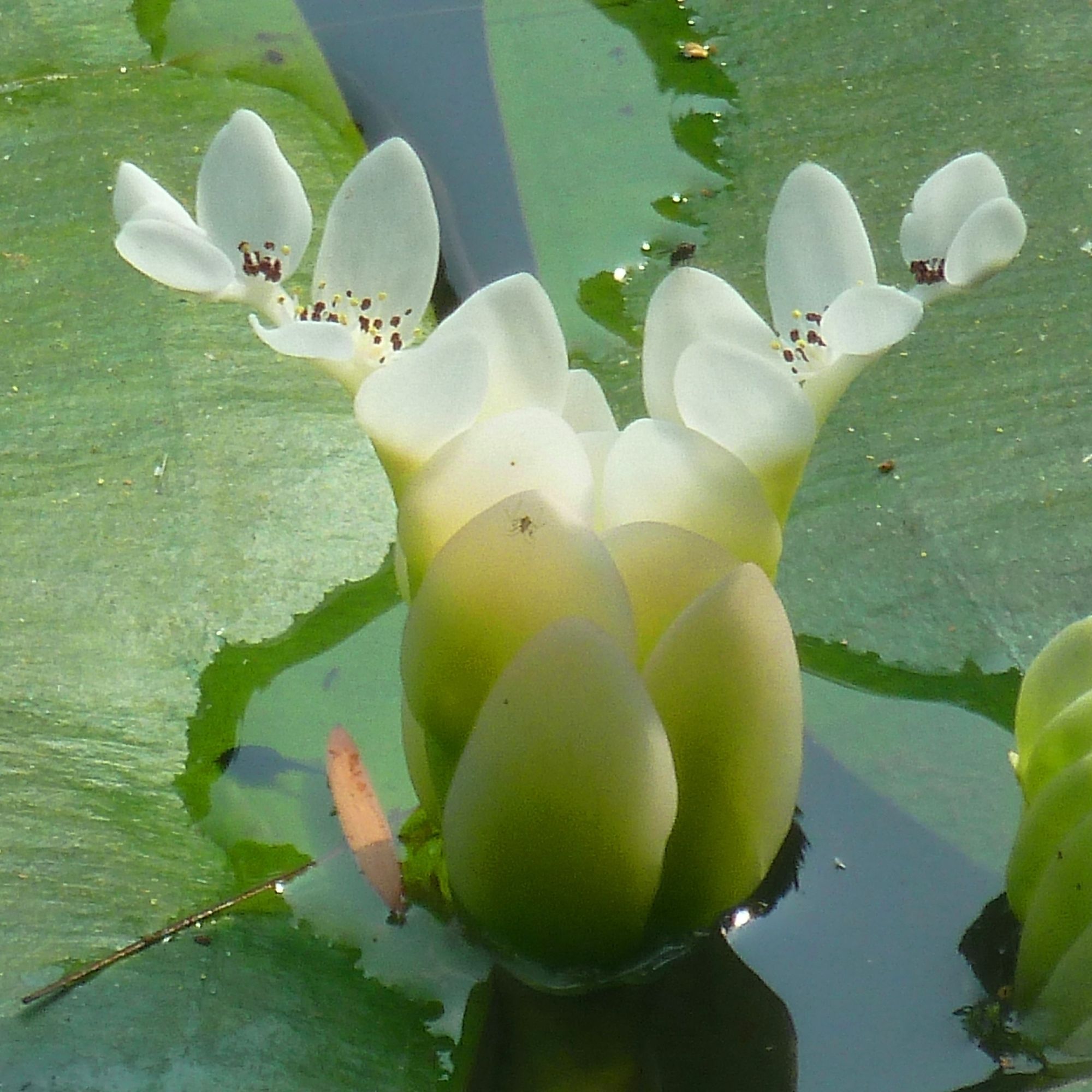
Aponogeton distachyos: The Waterblommetjie
One can only marvel at the art of botanical drawings. In Figure 1, a coloured engraving of flowering and fruiting stems of Aponogeton distachyos, by F. Sansom, after S. Edwards (Wellcome Collection) can be seen. This very old drawing, done around 1810, beautifully depicts the different parts of this specific plant, best known in the Afrikaans vernacular as waterblommetjies.
When you google the word ‘waterblommetjie’, it is mostly recipes for stews that appear, linked to this edible South African water flower. There is a well-known Afrikaans song, starting with ‘Waterblommetjies in die Boland’. This special plant is endemic to the Western Cape and is widely and commonly used as an edible wildflower. However, the English common name, Cape Pond Weed, does not sound like something you might want to indulge in!
The monogeneric family Aponogetonaceae only includes a single genus, Aponogeton. The genus is comprised of about 60 species occurring in the palaeotropics and southern Africa, of which 18 are from mainland Africa (Chougule et al. 2022). The species has become widely naturalised in many countries, including Chile, Argentina, Australia, New Zealand, the USA, the UK, and some parts of Europe (Pemberton 2000).
Four species of Aponogeton are endemic to South Africa (Goldblatt & Manning 2000). The waterblommetjie, Aponogetondistachyos is estimated to exist in at least 100 locations in the Western Cape (Mtshali and Von Staden 2017).
Aponogetondistachyos, a floating aquatic plant, grows naturally in winter and is adapted to growing in ponds and vleis of 1 to 2 m deep, which often dry up in summer. It has long, oval-shaped leaves that float on the water (Figure 2). The dormant tubers sprout again as soon as the pools fill in autumn. The flowers (being the ‘blommetjies’) are the edible part (https://pza.sanbi.org/aponoget...). The flower is interesting in that it is a forked inflorescence bearing tiny, white, one-petalled flowers with brown anthers (Figure 3). The flowers are distichous, meaning they are arranged alternately in two vertical rows on opposite sides of an axis (Goldblatt & Manning 2000).
Traditionally, waterblommetjies have been wild gathered as a vegetable. It is however not known what the current impact of wild harvesting is on this species. The plant is also sensitive to herbicides and pesticides (Mtshali and Von Staden 2017). The edible flowers can only be harvested during flowering time, which runs from about June to mid-October. It is primarily sold as fresh produce, although tinned waterblommetjies are sometimes available at South African shops around the world.
Only a few studies have discussed the nutritional value of Aponogetondistachyos. Pieterse et al. (2022) noted that it is a fat-free and cholesterol-free vegetable, and a good source of protein, dietary fibre, iron, Vitamin C, and folic acid. In terms of the medicinal value of waterblommetjies, Sadgrove (2022) indicated that the plant contains flavonoids and dietary fibre which could have health benefits towards protecting mitochondria, and as a prophylactic for insulin resistance.
Waterblommetjie bredie, a very delicious stew, is traditionally cooked with onions, mutton or lamb, potatoes, waterblommetjies as the green vegetable, and quite often, a few leaves of the local sorrel or ‘suring’ (Oxalis pes-caprae) is added to provide some acidity. The end product is truly a gourmet dish. Some are of the opinion that this traditional dish tastes much the same as green bean stew, only it is different!

Figure 1: Watercolour illustration of Aponogeton distachyos (by Edwards Sydenham Teast). Curtis's Botanical Magazine (1810), Public Domain Mark (PDM)

Figure 2: Growth form of Aponogeton distachyos. Image – iNaturalist (Peter de Lange, no rights reserved (CC0))

Figure 3: Flower of Cape pondweed in the Manie van der Schijff Botanical Garden, University of Pretoria. Author: JMK, date 2015-09-20 (CC BY-SA 3.0)



